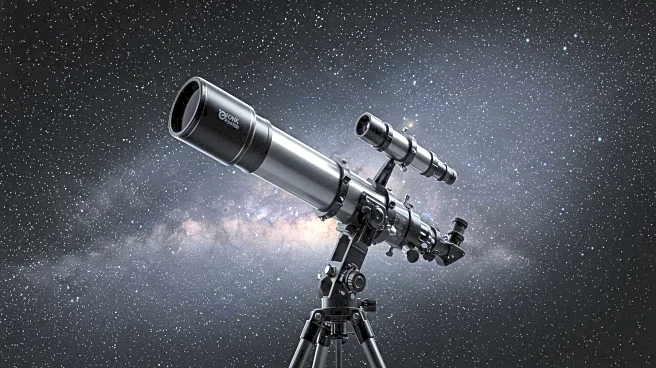What's Happening?
The James Webb Space Telescope (JWST) has conducted an extragalactic survey that unveiled fainter and more distant objects than previously observed, dating back to the earliest periods of the universe. This survey revisits the Hubble Ultra Deep Field, a composite image from 2004 that revealed nearly 10,000 galaxies. JWST's new survey, named the MIRI Deep Imaging Survey (MIDIS), has identified 2,500 additional objects, many of which are even more distant. The survey utilized the telescope's Mid-Infrared Instrument (MIRI) and Near-Infrared Camera (NIRCam) over nearly 100 hours of observing time, capturing hundreds of extremely red galaxies that may date back to less than a billion years after the Big Bang.
Why It's Important?
This development is significant as it enhances our understanding of the universe's early formation and evolution. By identifying galaxies that are extremely distant and potentially from the universe's infancy, scientists can gain insights into the conditions and processes that shaped the cosmos. The ability to observe in mid-infrared light, which is beyond human vision, allows researchers to detect previously unseen regions of dust and old stars, contributing to a more comprehensive cosmic map. This advancement in astronomical technology and methodology could lead to breakthroughs in astrophysics and cosmology, impacting scientific theories and models about the universe's origins.
What's Next?
Future observations and analyses using the James Webb Space Telescope are expected to continue expanding our knowledge of the universe's early stages. Researchers will likely focus on further exploring the newly discovered galaxies and their characteristics, potentially leading to new discoveries about star formation and galactic evolution. The data collected may also prompt revisions to existing cosmological models and theories, influencing ongoing scientific debates and research directions. Additionally, the technological advancements demonstrated by JWST could inspire further innovations in space observation instruments.
Beyond the Headlines
The implications of this discovery extend beyond scientific research, touching on philosophical and cultural dimensions. Understanding the universe's origins can influence perspectives on humanity's place within the cosmos, potentially affecting cultural narratives and philosophical inquiries. The technological achievements of the James Webb Space Telescope also highlight the importance of international collaboration in scientific endeavors, as the telescope is a joint project involving NASA, the European Space Agency, and the Canadian Space Agency.











